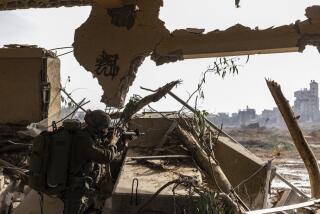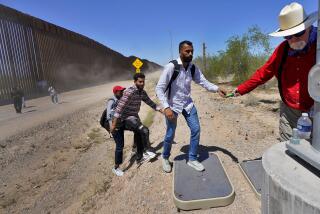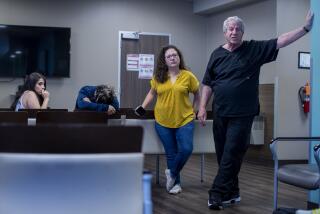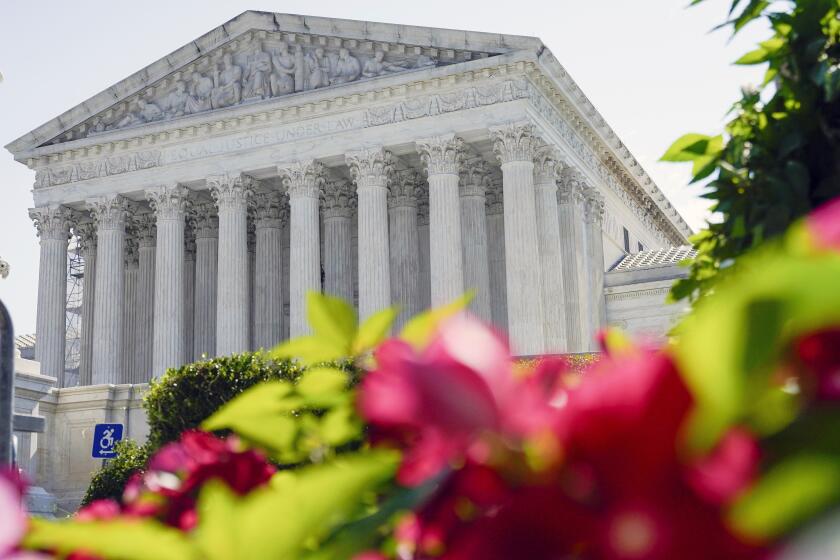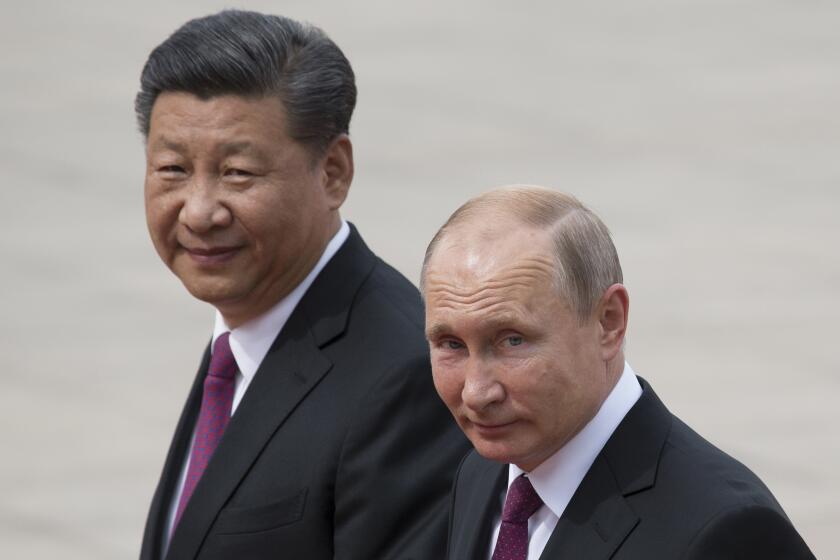Philadelphia Takes Aim at Youth Violence
By the odds, Norman Moore believes he should have died last summer. The city of Philadelphia agrees.
He and his best friend were both 16. His friend was shot in the head and killed; Moore was one street away.
“I was supposed to be with him,” Moore said, running his fingers along the word “HIRAM” tattooed on his left forearm in honor of his dead friend. “It could’ve easily been me.”
He’s not safe yet. His probation officer is concerned that Moore lives a half-block from the Badlands, at the heart of the city’s most lucrative drug market. A juvenile court prosecutor worries that Moore may be sneaking out to sell drugs or trade guns, violating a court-mandated curfew.
Moore is one of 100 teenagers and young men in Philadelphia considered to be among the most likely to be killed or to kill. Officials hope an aggressive attempt to reduce the number of children dying by gunfire could save the youth’s life.
“We’re not trying to solve all the problems, only the problems of life and death,” said John Delaney, an assistant district attorney and an organizer of the 10-month-old project. “If we could keep young people from killing one another, the rest of it will come together.”
Forty percent of Philadelphia’s 296 homicides last year involved assailants age 7 to 24. Half of those were in the city police’s 25th district, where the Youth Violence Reduction project is centered.
Among the city’s murder victims in that age group, 90% were killed by guns.
Dubbed “the toughest of the tough,” the 100 teens and young adults in the program were drafted from probation lists, school tardy sheets and repeat-offender rolls. City officials picked them from among thousands of nominees because they have been shot, arrested with guns or accused of killing someone.
The program bombards the troublemakers with job services, drug rehabilitation and family counseling. Police and probation officers provide intense supervision, sometimes visiting the youths several times a week.
Moore said he is on the list because he was caught dealing drugs and was with someone who was carrying a gun. Program administrators, familiar with explanations, say most of the young men are likely to have had serious weapons violations.
Added to the program in October, Moore at first bristled under the intense attention and surveillance.
“I thought they were kidding. They said I had to stay in the program until the murder rate goes down. That could be like forever,” Moore said recently from his porch as a group of rap-singing drug dealers stood nearby.
He and his buddies used to fill their evenings like that too. Sometimes drinking. Sometimes smoking pot. Sometimes “just hanging.”
Now his probation limits where he is allowed to loiter. Nearly all the street corners near his house are off-limits as “hot corners,” known for drug activity or gang wars. He also avoids most of his friends who are still in that world.
The limits would have been meaningless under old probation rules, which would have required him to see his probation officer about once a month. But lately, police and probation officers spend about three nights a week cruising North Philadelphia. They surprise gatherings of gang members and drug dealers, usually just scolding youths to go home.
“The other night, a [probation officer] and police officer walked up behind one of our kids in the middle of doing something he wasn’t supposed to,” Brian Coen, a juvenile probation officer, said. “The kid turned around, amazed: ‘Where did you come from? What, do you live around the corner now?’ ”
Getting youths off the streets is only half the problem. Young and listless, they can get into trouble when they’re bored.
“There’s just nothing to do all day,” said Moore; he spends much of his time watching television.
Police work is augmented by the efforts of volunteers, such as Brian Moll of the Philadelphia Anti-Drug Anti-Violence Network. Moll, 24, grew up a few streets away from Moore.
Moll visits Moore nearly every day, to sit on the stoop or drop off job applications from Wendy’s and Kinko’s. They have gone to a 76ers basketball game and spent a day shooting hoops.
“Sometimes there’s just nothing to do. I don’t want to go back to lockup, and I know he’s going to help with that,” Moore said.
Moll smells marijuana coming from the drug dealers across the street, or maybe from inside Moore’s house. He takes Moore aside and whispers to him how important it is that he not test positive for drugs.
Moore nods. Moll’s not sure he gets it.
“This is a hard neighborhood to grow up in, but I came out of it,” Moll said. “Other people have come out of it. You just have to learn to cope.”
Similar efforts are underway across America, many in response to the so-called “Boston Miracle,” a youth violence program that led to a 77% decline in youth homicides in the 1990s in Boston. Many cities, including Los Angeles and Durham, N.C., adopted parts of that program, such as in-school truancy courts, tighter supervision and probation enforcement, and mentor-based counseling.
But Philadelphia is one of the few cities to launch an across-the-board assault on dangerous youths --reaching them through their families, teachers and friends; visiting their homes and hangouts; and introducing them to probation officers, police officers, prosecutors and juvenile judges.
“Boston’s been visited by hundreds of cities wanting to do the same thing,” said James Alan Fox, a Northeastern University criminologist in Boston. Whether it works in Philadelphia “will depend on the extent to which they cooperate as opposed to compete.
“The history of the criminal justice world has been one of intense turf fighting, almost as intense as the gang wars,” Fox said. “Boston has really worked because of the cooperation.”
In Philadelphia, a dozen city workers, probation officers, prosecutors and community workers meet weekly to talk about teenagers in the program. The group hears reports on about 20 of the 100 youths each week and discusses options such as drug treatment, court action or church intervention.
Recently the group discussed whether to intervene on behalf of Moses Geigle, who was arrested on drugs and weapons charges the day before his 18th birthday. In court, he could be certified as an adult, meaning adult prison and a lengthy federal sentence, or kept in the juvenile system.
Probation officer Dominic Jacquinto wanted Geigle, who has a severe marijuana problem, classified as a juvenile and possibly enrolled in a day treatment center.
“He has the intelligence of a 10-year-old boy,” Jacquinto said. “He’d rather be building treehouses in the backyard, he’s got that mentality.”
Moll, who visits Geigle every day, worried that he may not show up at the center.
“You’ve got to be on him every day,” Moll said.
Delaney agreed to petition the court for juvenile status. Moll accompanied Geigle during his first week at the center, two buses and a subway ride from home. A month into the program, he was still attending it.
Not all the stories are successes.
A 17-year-old awaiting sentencing on weapons charges missed a meeting with his probation officer and was to have a bench warrant issued for his arrest. At an earlier meeting, Delaney and Jacquinto had agreed to ask the judge to send him to juvenile boot camp.
But the youth was missing for three days. He remains a name on the top 100 list, but since he violated probation he will remain in custody until he is sentenced. The group was unwilling to take another chance on him.
“I’d rather have him be locked up for 90 days than out killing or being killed,” Moll said.
For now the Philadelphia program is limited to 100 people in two police districts in North Philadelphia’s West Kensington neighborhood, which has the city’s highest homicide rate. All but four were already on probation for violent crimes, and many have been victims of gun violence, which statistically puts them more at risk for another attack.
Eventually, organizers expect the program to be expanded to West Philadelphia, which has the city’s third-highest youth homicide rate, then to the rest of the city.
But expansion would require funding. Currently the participating city divisions are using existing resources. For example, Delaney and Coen regularly work 10-hour days to allow time for the youth project. Each of four juvenile probation officers has been assigned 25 youths, leaving other officers to handle up to 40 youths each.
Only the Philadelphia Anti-Drug Anti-Violence Network has outside funding: $100,000 for one year to pay for 11 community street workers such as Moll.
Experts disagree about the way to tackle youth violence, which rose in the late 1980s with the drug trade and the increased availability of guns. Nationwide, about 50% of all homicides are committed by people ages 14 to 24, up from 38% 20 years ago, according to the Bureau of Justice Statistics.
“The entire growth in teen killing has been related to guns,” said Fox, an expert in juvenile justice who was an analyst for the Boston project. “It’s always been that teenagers are impatient and imprudent, and now they are better armed.”
Fox said the answer lies in targeting youths just about to launch their criminal career. Boston cited young males under 16; Philadelphia is aiming at men 17 to 24.
“You’re making a prediction, and it’s a risk,” Fox said. “You may be targeting kids who, left alone, would be fine. It’s like the stock market, you have to take a risk.”
Philadelphia officials say there are differences. The Boston problem was more gang-based, while Philadelphia’s troubles are rooted in the drug trade. But the idea is the same.
“Boston is not our model,” Delaney said. It’s our inspiration.”
*
On the Net: https://www.ppv.org/
More to Read
Start your day right
Sign up for Essential California for news, features and recommendations from the L.A. Times and beyond in your inbox six days a week.
You may occasionally receive promotional content from the Los Angeles Times.
